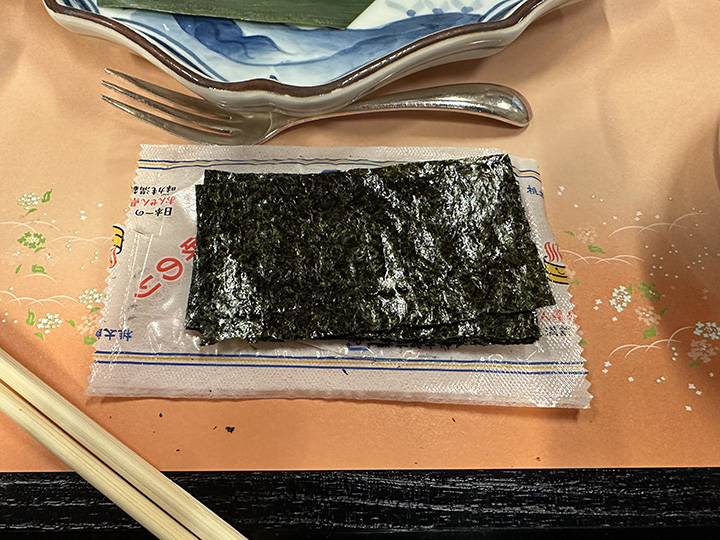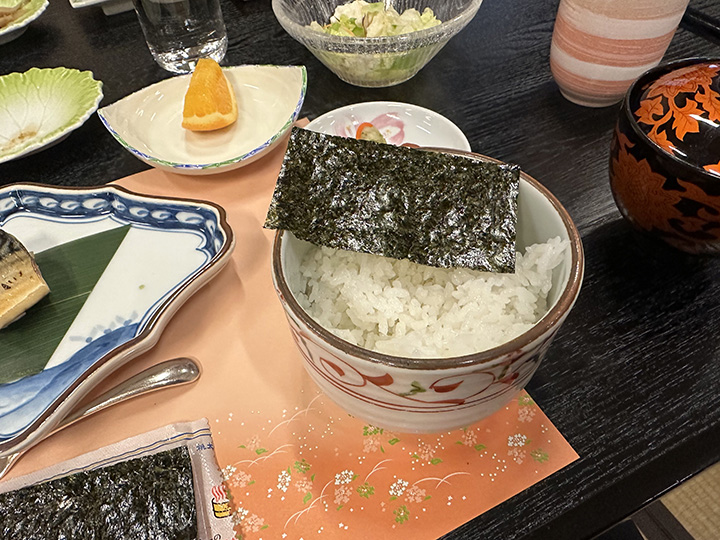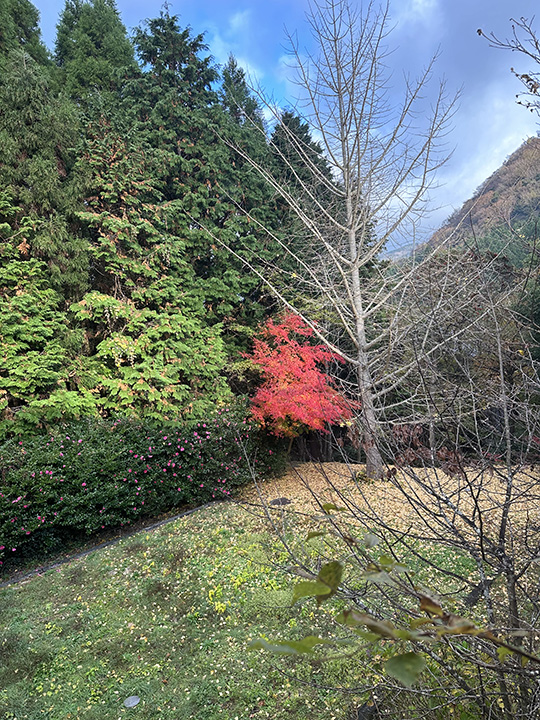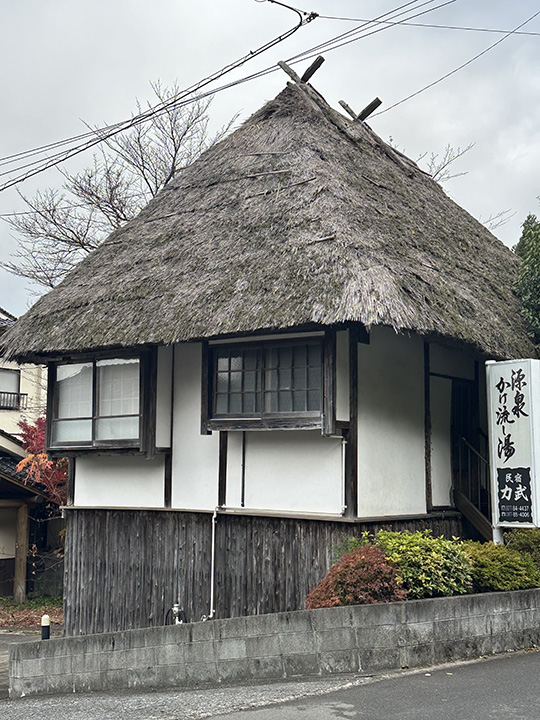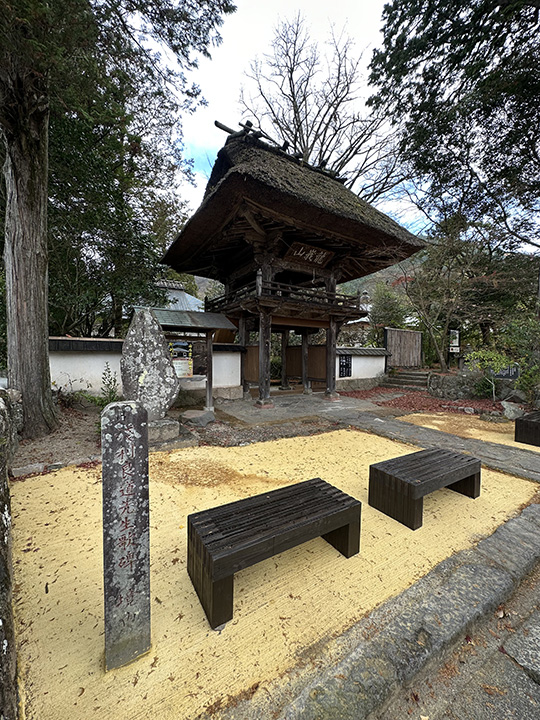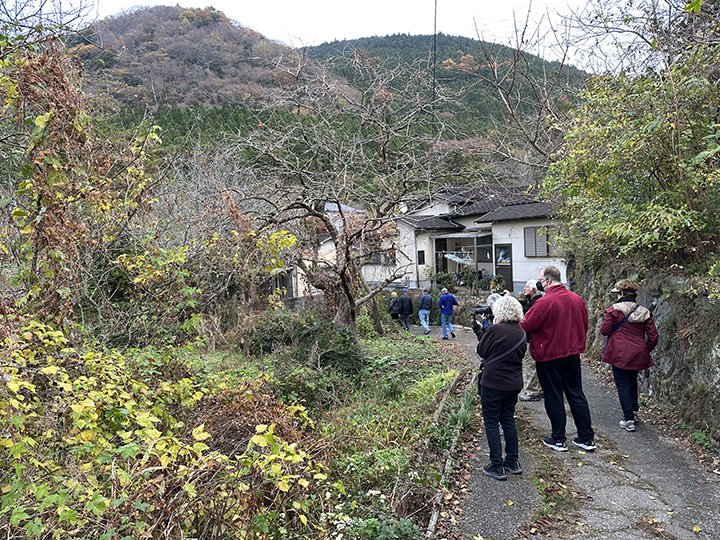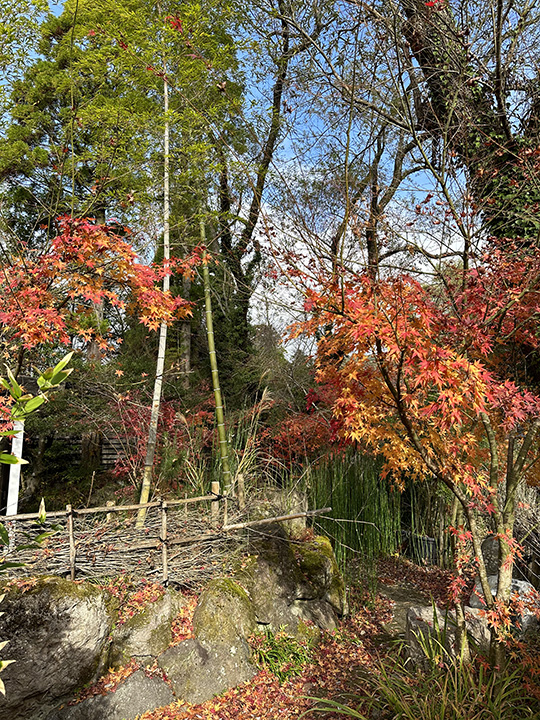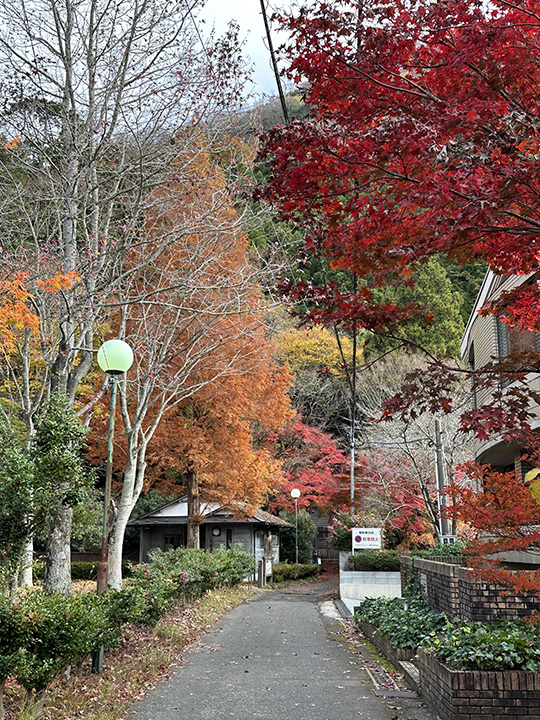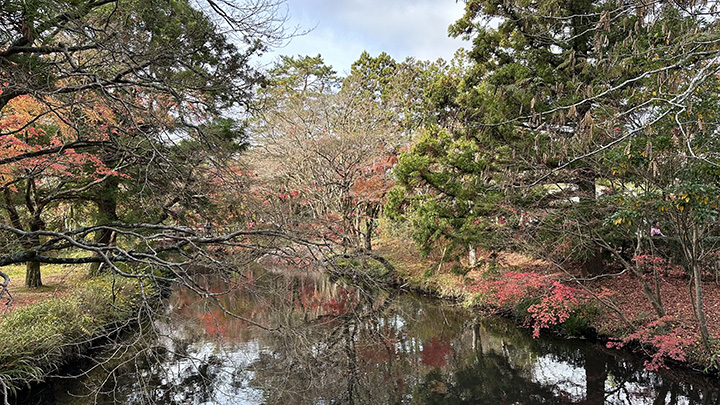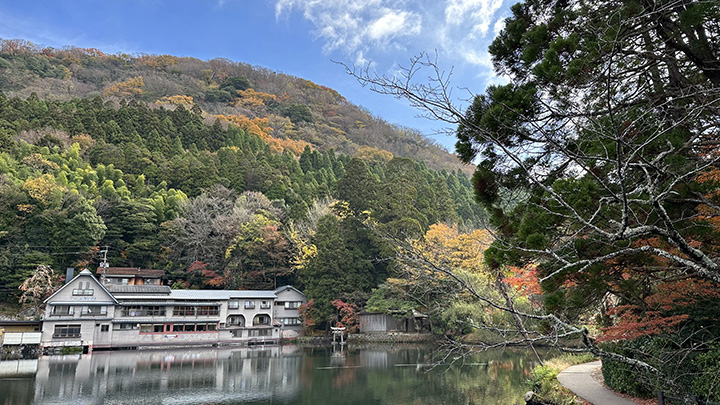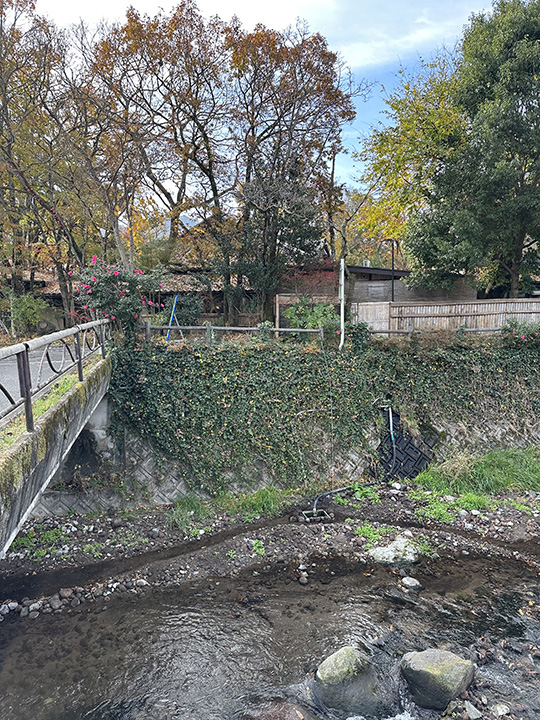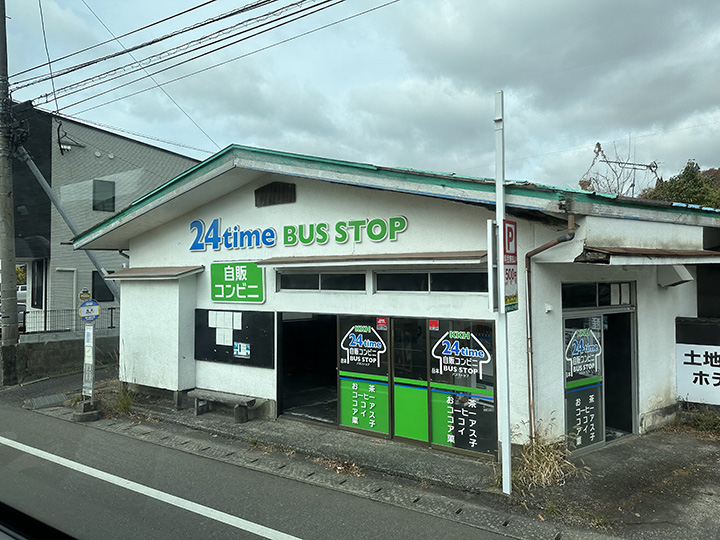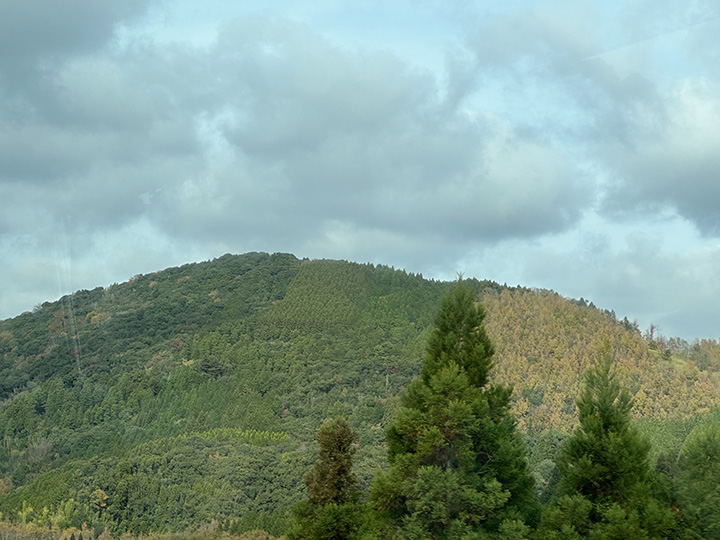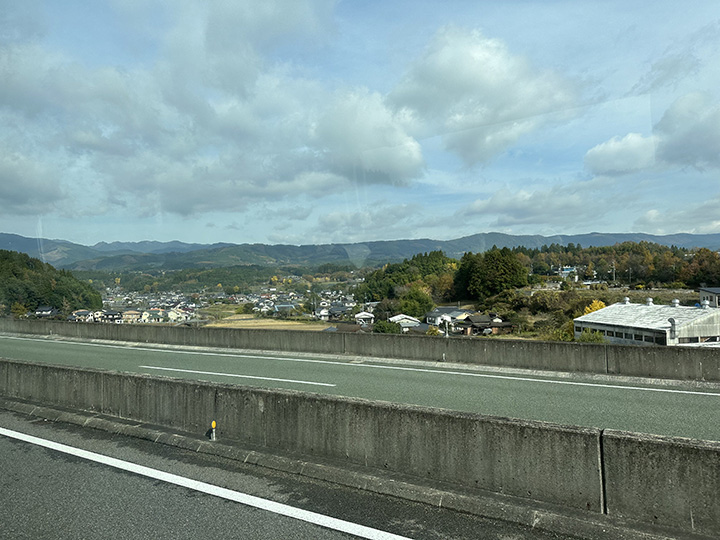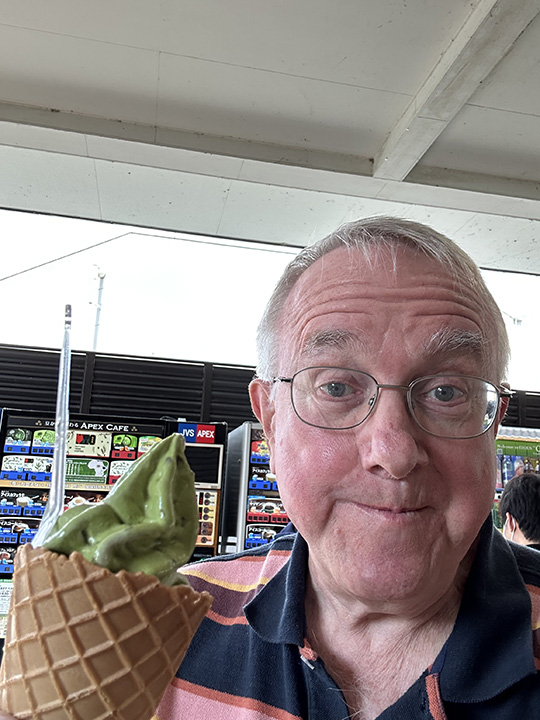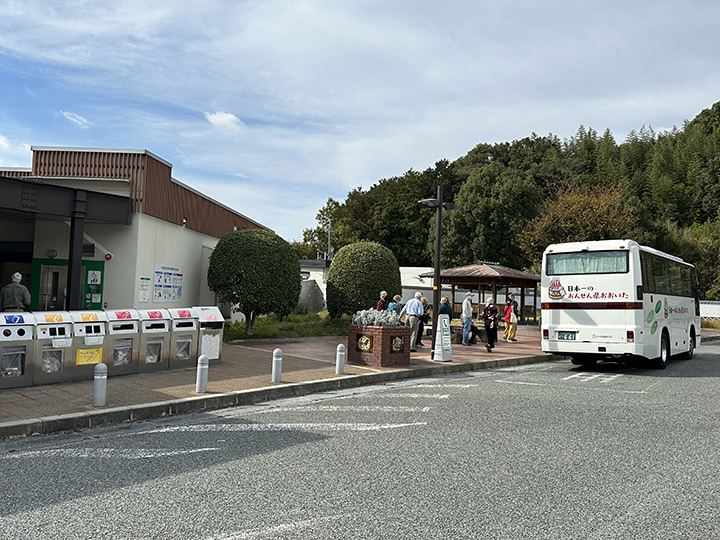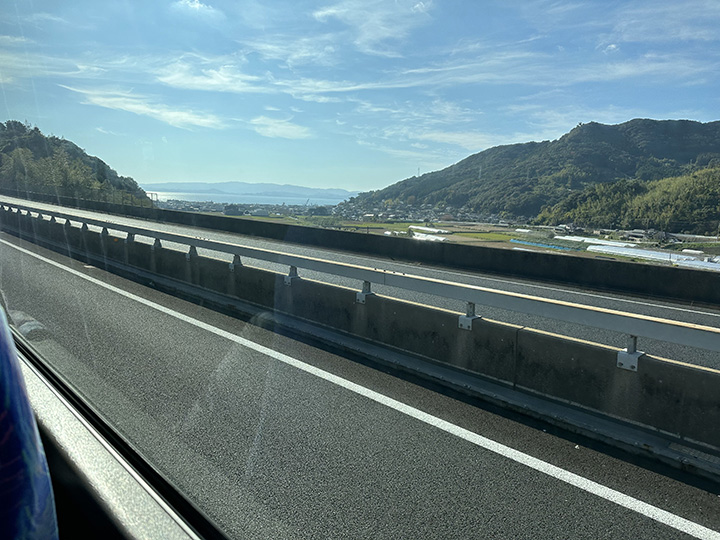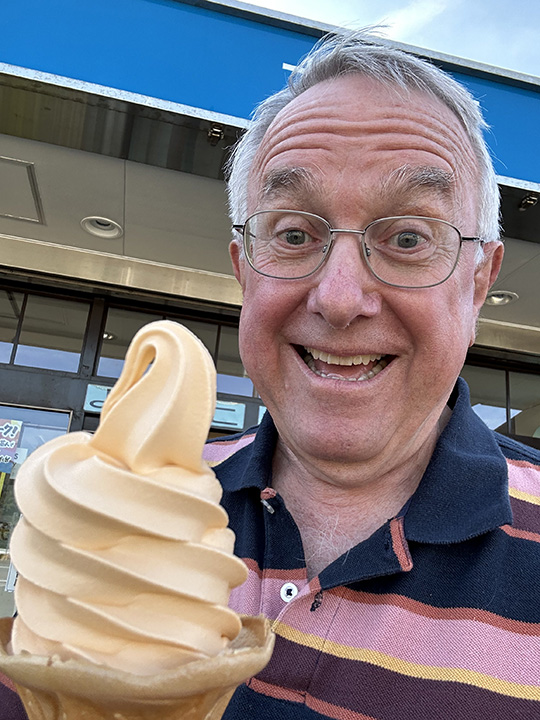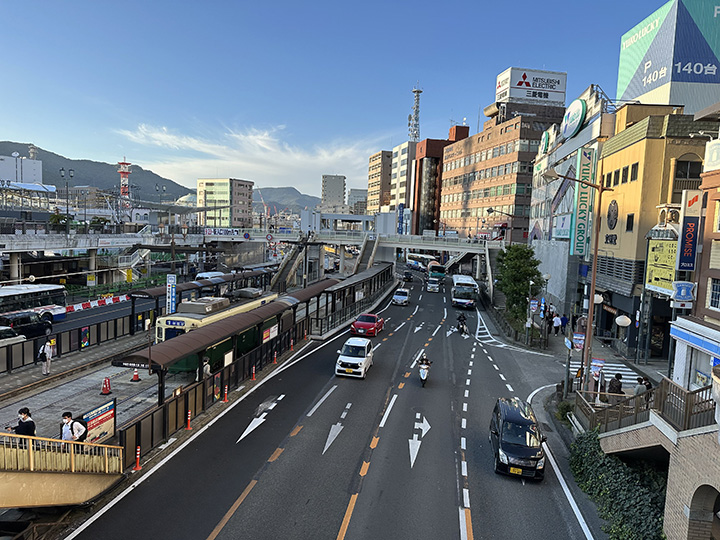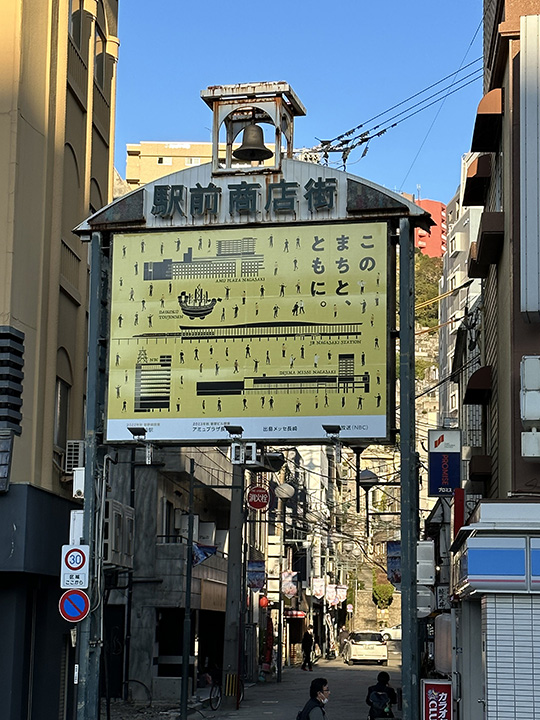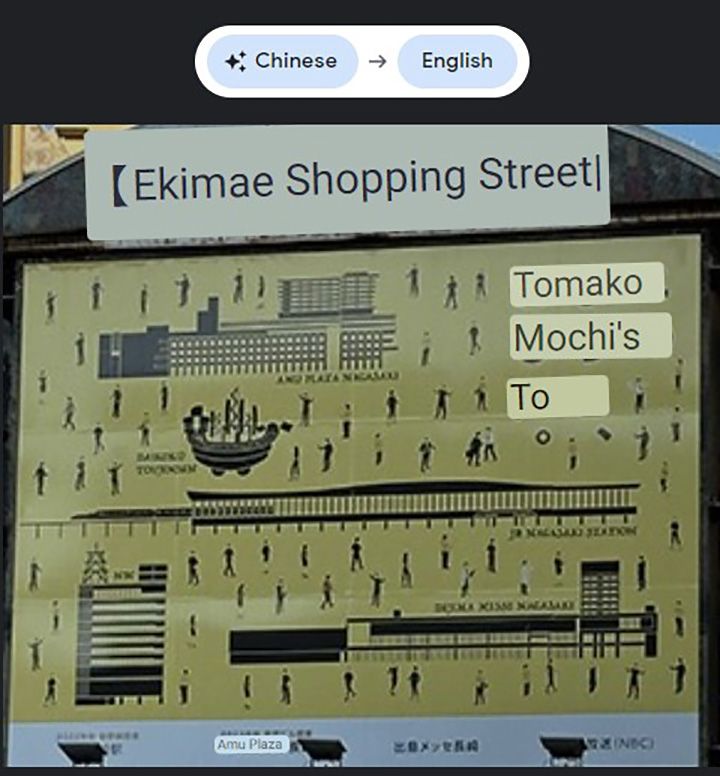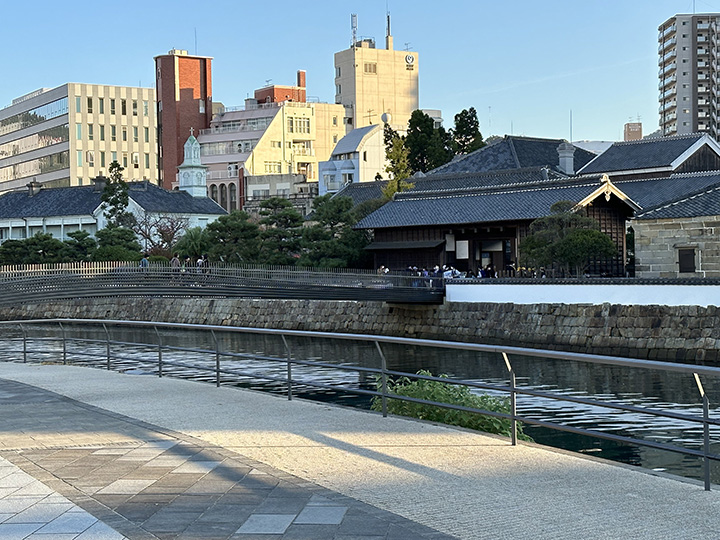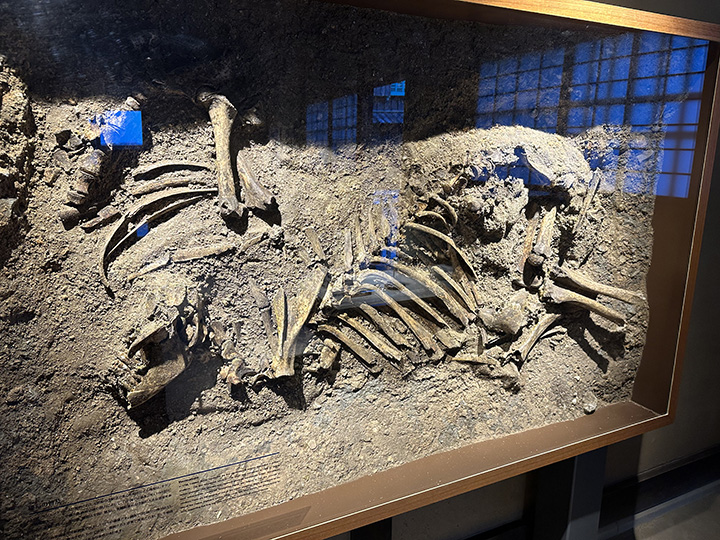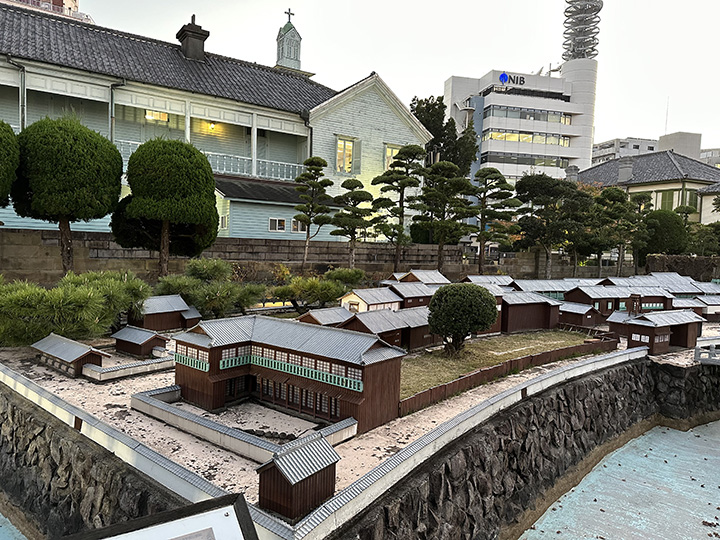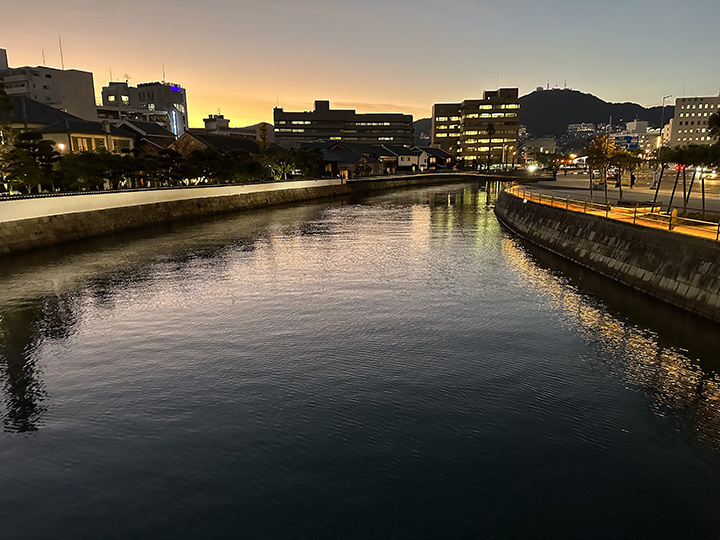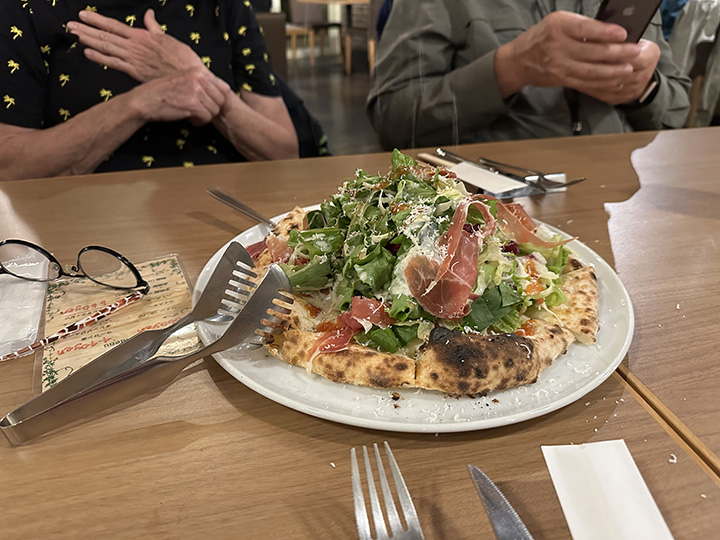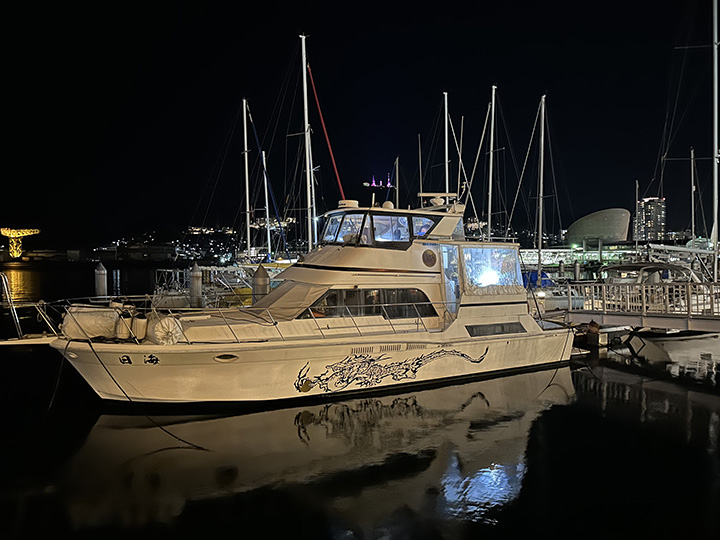|
I started the day with a hot spring bath, took a long bus ride, visited a port of substantial historic impact, ate a pizza salad, and took a walk along a bay at night. It was another good day.
If you are going to bathe in a hot spring first thing in the morning, you really do need to wear a kimono.
The air was chilly but the view was spectacular on the way to bathe.
Breakfast was another meal of tiny portions of various things: some excellent, some not so very.
Even if I didn't know exactly what it was I was eating, it sure was pretty to look at.
I think that's some sort of tofu soup.
When you add up all the tiny portions, that's a lot of food.
I've seen this before. Inside that wrapper are paper-thin slices of seaweed.
Like that.
They apparently are meant to complement the rice.
So I tried it. No, absolutely no, not for me.
"The autumn leaves drift by my window..."
He looks lost over there in the corner by himself.
C'mon Road Scholars, let's go for a morning walk.
The town of Yufuin is down the road past those flowers and persimmons somewhere.
And we are going to find it.
That house has an actual thatched roof.
And some fall colors in the back yard.
There are thermal vents in the ground around here. Those arenít fires; they are places where steam vents out of the ground.
So what's this right here in a residential neighborhood?
Itís a Buddhist temple!
And this one has a bell.
There are little Buddhas all around.
This Buddha is resting. Kathleen said she thinks he looks like heís watching TV. Can you make him out?
Kathleen said the frog represents an invitation to come back.
It's a quiet, restful setting.
See the thatched roof? Apparently they are high maintenance and the town wonít allow any new structures to be built with them. If you are a farmer and you have buildings with thatched roofs on your farm, you are allowed to keep them if you can prove you have the means to maintain them.
That is the lovely neighborhood bathhouse.
The neighbors donít take kindly to strangers using their bathhouse.
A formally-dressed Buddha guards the bathhouse pump against invading tourists.
The Road Scholars decided they didnít want a bath anyway and they pressed onward.
The pretty was out in full force this morning.
Everywhere you looked.
The colors danced before your eyes.
Again the forest was ablaze.
And Bill enjoyed every minute of it.
We found a lake and the town of Yufuin.
And we found tourists. The town was packed with tourists.
There were more pretty trees.
And more.
And more.
And more.
This has got to stop.
There was a river.
With a bridge.
And a goldfish and two ducks. Do you see the ducks? They are there, I promise.
Brian stopped to look at some pretty purple flowers growing along the concrete river bank.
They actually seemed lovelier at the time than they do in this picture. Oh well.
It was all very pretty, I promise.
We found a persimmon tree.
It feels hard as a rock. Apparently some Japanese persimmons can be eaten before the first frost. We have had them several times at meals and they are not bad at all. Not nearly as sweet as Tennessee persimmons after a frost, but still they are good.
We found a garden while strolling the back streets of town.
Gotta prevent the critters from eating up the produce.
Brian and Don are consulting their maps to find the way back to the hotel. Bill used Google Maps on his iPhone.
We found a Buddhist cemetery.
And we found our way back to the hotel right on time. Shortly afterward, we boarded the bus to take us to Nagasaki.
My guess is that they meant 24 HOUR bus stop.
This was our route.
The terrain along the way was mountainous and lovely.
And then things started to flatten out again.
We stopped at a very fancy rest area.
Just like at the bath, red doors are for girls and blue doors are for boys.
Everybody managed to find something for lunch.
Bill finished his off with green tea ice cream.
And then we hit the road again.
There's a body of water over there.
And another rest stop. Let's pull in.
Kathleen said this area is popular with young lovers and that they like to have their pictures made standing under iron hearts like that one.
This time Bill got the apricot ice cream because it is a specialty here.
So did Don!
We have arrived at Nagasakiís Hotel Cuore, our home for the next two nights.
Now letís go see a little of the city.
Nice view from that pedestrian overpass.
Something about that sign just looked odd to me, so I snapped a picture. Turns out it's information for shoppers, telling them the names of establishments in this shopping district.
The interesting thing to me, though, when I got home and asked Google Images to translate the sign, I found it uses Chinese characters. Maybe this is Nagasaki's Chinatown?
We are using public transportation, of course.
And we are wearing our masks.
This area is known as Dejima end it is important not just to Japanese history, but to the history of world trade.
Dejima ("exit island"), in the 17th century was an artificial island off Nagasaki, Japan that served as a trading post for the Portuguese (1570Ė1639) and subsequently the Dutch (1641Ė1854). For 220 years, it was the central conduit for foreign trade and cultural exchange with Japan during the isolationist Edo period (1600Ė1869), and the only Japanese territory open to Westerners.
Dejima was created in 1636 by digging a canal through a small peninsula and linking it to the mainland with a small bridge. The island was constructed by the Tokugawa shogunate, whose isolationist policies sought to preserve the existing sociopolitical order by forbidding outsiders from entering Japan while prohibiting most Japanese from leaving. Dejima would house Portuguese merchants and separate them from Japanese society while still facilitating lucrative trade with the West.
Let's go in.
At least I can read the important part.
Dejima today is a work in progress. The island was designated a national historic site in 1922, but further steps were slow to follow. Restoration work was started in 1953, but that project languished. In 1996, restoration of Dejima began with plans for reconstructing 25 buildings in their early 19th-century state.
Old warehouses.
In recent years, in order to attract more tourists to the city of Nagasaki, a great deal of extra effort has gone into restoring Dejima to its 19th century state. The old warehouses, homes, administrative offices and the like now house museum exhibits.
Such ships once lined this port.
The exhibits are nicely laid out.
A samurai in a facemask briefs Kathleen on how things have changed since she was last here before Covid.
Thatís Dejima in the 19th century.
The old now sits in the shadow of the new.
Thatís a small diorama showing how the place once bustled.
You can walk right into the old warehouses.
Where you can see goods that have just arrived from China.
This cow was excavated and found to be whole when it was buried. This leads the archaeologists to theorise the cow had cowpox when it died and was being used to develop inoculations against smallpox.
That is the public outhouse.
The administrative offices.
I always thought this type of dinnerware was exported from Japan. But in fact, this blue on white dinnerware was made in England and shipped to Japan to be sold. The actual style was originally Chinese.
Japanese dinnerware looked like this.
A lovely garden on the end of Dejima island contains this model of old Dejima.
While it is far from the ocean now, in the 19th century Dejima sat right at the oceanís edge.
Bill sat for a few minutes by himself just admiring this garden in the dusk.
But Kathleen came and found him and said everybody wanted to leave early and find something to eat.
Too bad. Bill could have stayed here a little longer.
But that's OK. Road Scholar had picked out a fine place for dinner -- a Japanese/Italian/French fusion restaurant just a few blocks away. Hi Mary!
We were served two bites of steak.
A dollop of pasta in marinara sauce.
And a huge salad pizza.
That was great. Now let's find the hotel.
We could have taken public transportation back, but the hotel really was in walking distance so some of us chose to follow Kathleen on foot.
Walking through the city at night was a great choice.
It was quiet and the lights were pretty.
Exceptionally pretty at times.
I'm glad I came this way.
Nice boat.
A dining area on the wharf. Maybe we should come back here sometime?
Kathleen promises the hotel is just over there.
Star Wars fans like this picture.
And I like resting my feet at the end of a busy day.
|








